Sure, you can purchase new seeds each year at the nursery. But saving them is a simple process, and one that’s easy to master when you want to fill your garden with more cosmos.
I began my seed-harvesting journey with these flowers.
The seeds were staring me in the face, practically begging to be collected. Plus, I love this big, airy, colorful plant, so collecting more for sowing next year – and for free! – was a no-brainer.

We link to vendors to help you find relevant products. If you buy from one of our links, we may earn a commission.
It took no time at all to gather handfuls of the seeds, and the following year I ended up with a long, full row of pink, white, and maroon blooms growing along my fence. My bees and a multitude of other pollinators loved it too.
If you have cosmos blooming in your garden this year, you’ve got to try it.
We’ve got you covered below, with all the information you need to ensure explosions of color for days from future plantings, for free.
What You’ll Learn
Cosmos Pollination
Cosmos, with their vibrant colors and silently beckoning petals, are like a welcome mat for pollinators.
That’s one of the reasons why I toss handfuls of them into my wildflower garden each year, and I’m always excited to see their lacy leaves popping up from the ground.
The variety and number of pollinators and beneficial insects they attract satisfies my insect-loving nature and helps my garden out at the same time.
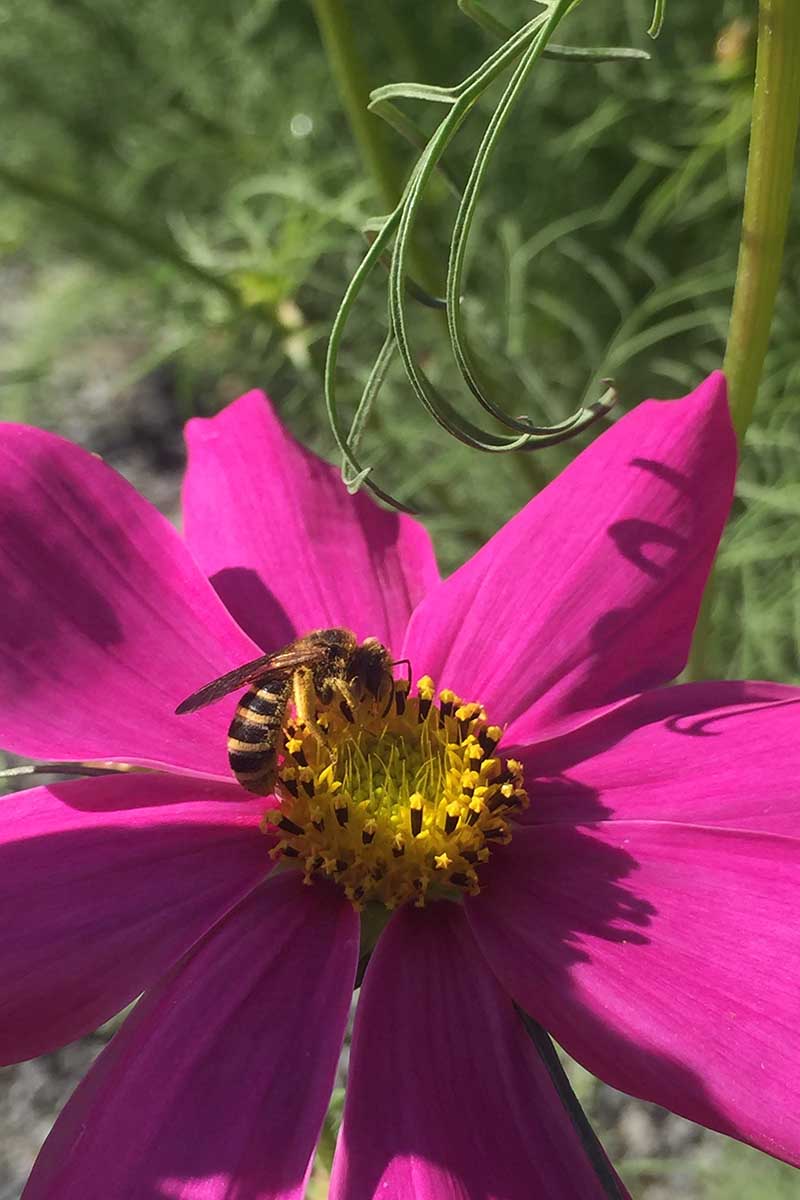
Don’t deadhead the faded blooms if you plan to harvest seed! Be sure to leave at least a few flowers of each kind you wish to save and that are past their prime intact on their stems, to give the seeds time to mature.
These beauties can cross-pollinate with other varieties, so if you wish to grow cosmos in a known color palette, bag the blossoms to prevent unwanted cross-breeding.
Otherwise, waiting to see which colors pop up will be a surprise – and this can be fun, too!
If you are okay with the location where these airy beauties pop up being a surprise as well, these plants are excellent at self-seeding. But if you want to be in control of where they land, collecting and saving them is a cinch.
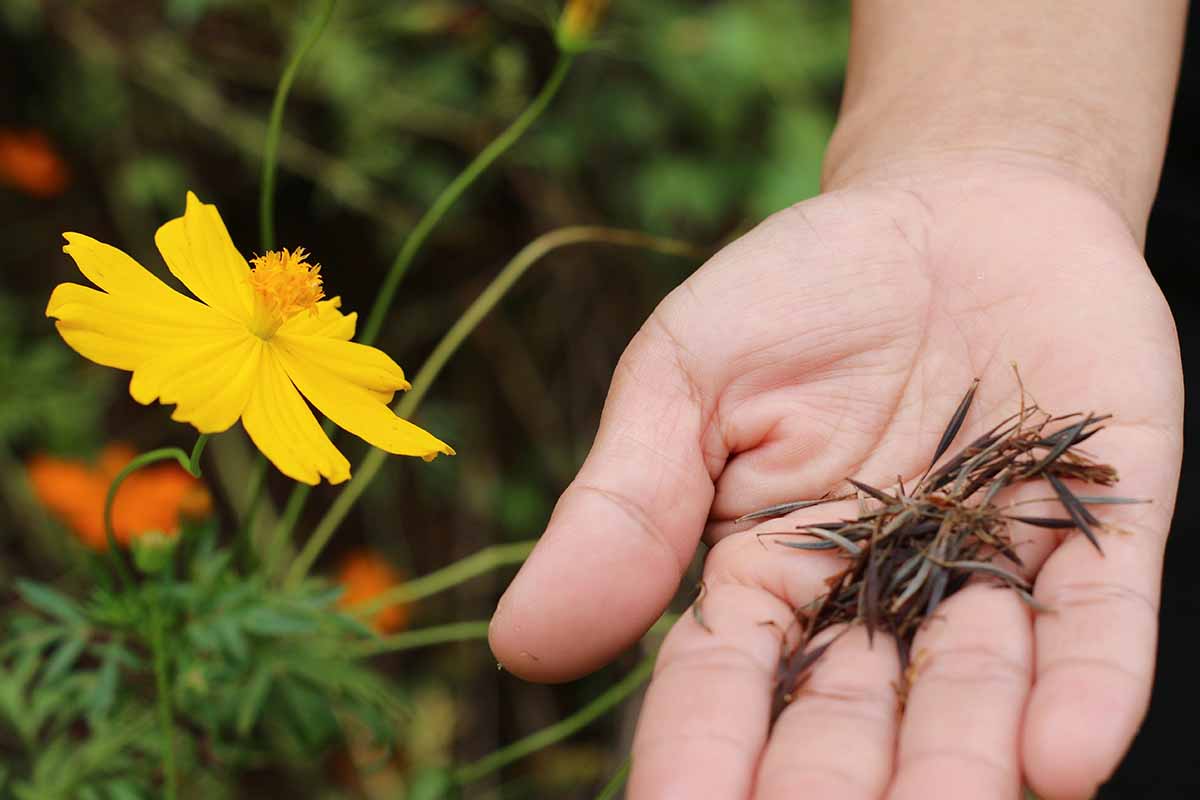
Let’s talk about how to do this next!
How to Harvest
You can harvest cosmos seeds throughout the season as individual flowers die back and they mature, or you can wait until the end of the season and harvest them all at once.
The latter option means you should be prepared for some inevitable voluntary spreading before you can get to them, but it cuts down on having to take the time to check periodically for mature seed heads.
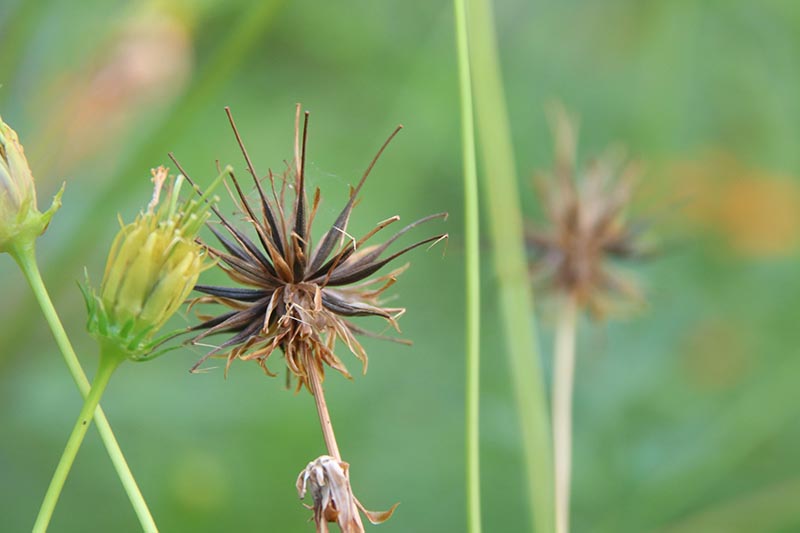
Choose a dry day to harvest to make sure the seeds you collect are as dry as possible. You can choose to spread them out to continue drying on a screen after harvest to prevent rotting in storage.
After the petals fall and the heads dry, it’s easy to remove the deep brown, five- to six-millimeter seeds. I think these look like tiny, overripe bananas.
These plants are seed spillers, so as the heads mature and dry, they gradually open and the seeds fall off. A gentle touch is enough to knock them loose once they’re mature.
Use your thumb to brush them off the dry heads into an envelope or jar.
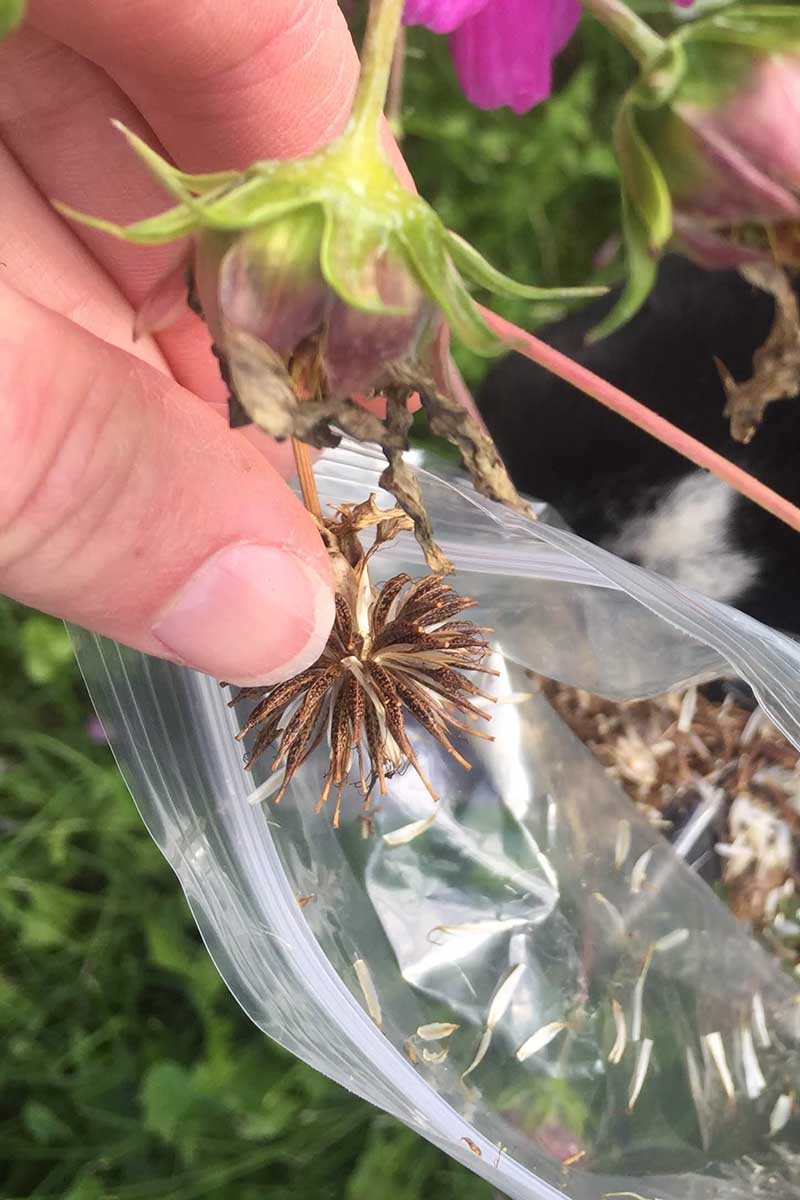
You might be left with some light-colored chaff mixed in as well. This can be removed by using a sieve, or dropping handfuls in front of a fan, or allowing the breeze to blow the chaff away.
How to Store
Cosmos seeds will stay viable for up to five years if you store them properly.
Place fully dry seeds in a waxed paper envelope or sealed jar, and label it with the species, cultivar name, and date collected.
Store in a cool, dry location until you are ready to plant them out and enjoy another summer of blooms!
Homemade packets also make lovely gifts for friends and family members who may like to add some cosmos to their own gardens.
Like Stars in the Sky
Harvesting cosmos seeds is easy, and it’s one of the best ways to enjoy the ethereal beauty this plant has to offer year after year in your garden.
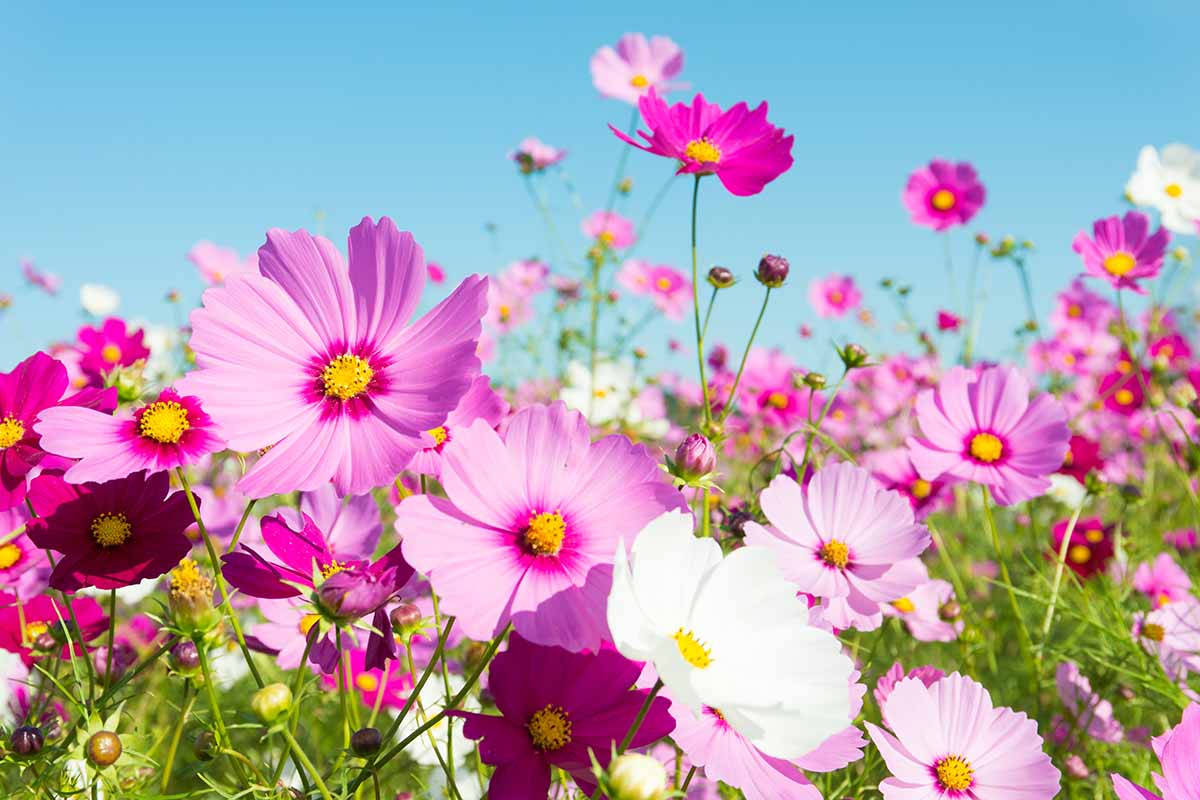
Will you be saving seed from your own plants this year? Cosmos is a generous plant, so you’ll have plenty to expand your wildflower patch, or to share with friends and family! Let me know what your plans are in the comments below.
To help you sow, grow, and use cosmos in your garden, read these guides next:

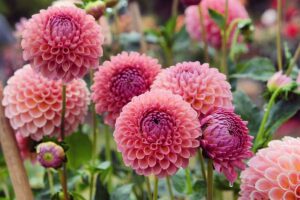

I plan to save some mature dry seeds this week after they completely dry on the stem, because we just got rain last night twice in the early morning hours!! Totally unexpected in Oklahoma on August 12!! My cosmos are all a pretty hot pink. I am amazed at how big one of the plant’s stems got! The main stem is larger than my thumb.
Hello Tammy!
Those sure sound beautiful, with seeds worth saving. I imagine waiting for the seedheads to dry on the plants may even encourage a couple to reseed themselves, who knows? I did want to remind you to fully dry the seeds that come out of the seed heads ahead of storing them, on a screen or piece of cardboard. You wouldn’t want to risk mold.
Good luck!
I love cosmos, because their color is really bright 🌞, this plant can go without rain, and water 💦 for days on end. Great for the veggie garden also, gives the garden a lot more color for the pollinates to invite them right into the space.